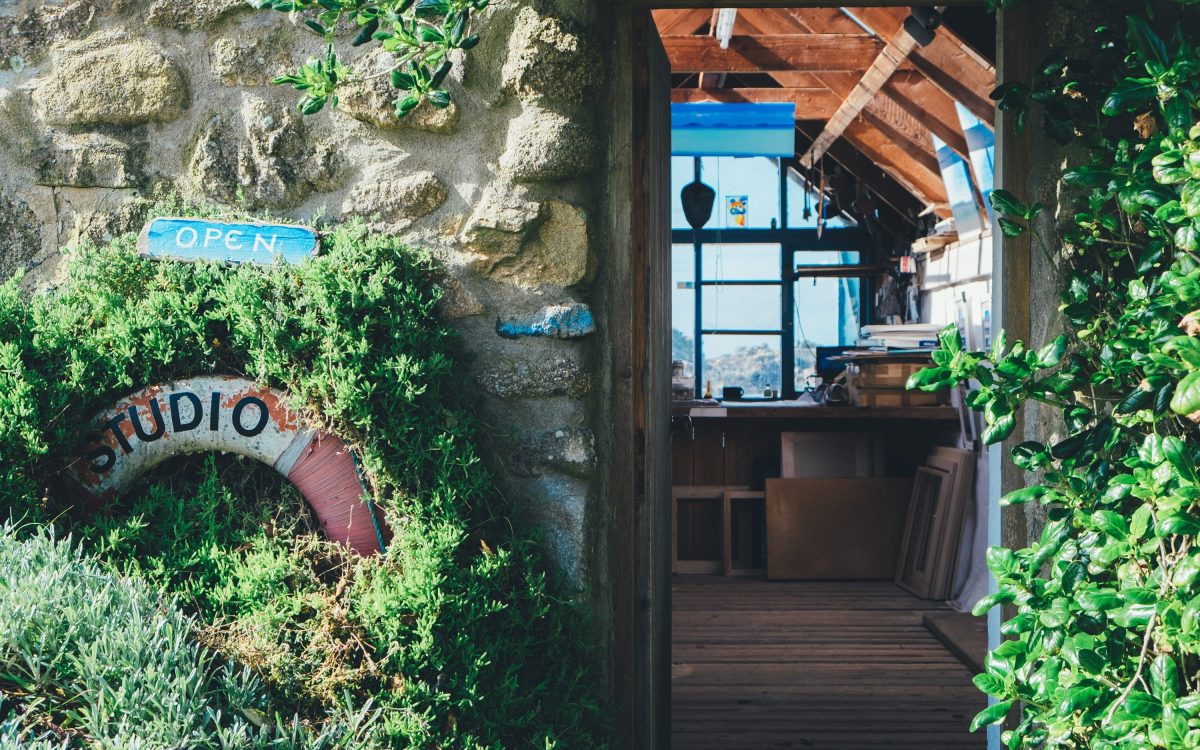Is being a studio assistant a good gig for aspiring artists? First we need to get the differentiation right.
’A studio technician is somebody you bring to the studio because they’ve got skills that you need. And a studio assistant is somebody you bring to your studio because you want another pair of hands that you will give and build the skills for,’ Dean Colls told ArtsHub.
A sculptor who works closely with studio assistants from project to project and with his partner Louise Skačej, Colls himself started off as an apprentice with hyperrealist sculptor Ron Mueck and was McClelland’s The Southern Way commission artist in 2012.
Colls continued: ‘I wouldn’t be where I am today if it wasn’t for my time with Ron. The traineeship was always about [learning] skills and process first.
‘The biggest advantage of the traineeships and mentoring that I got was seeing what was possible. Spending time with someone who’s made a life as an artist, and just knowing that you can make a life as an artist, and you see how they’re doing it.’
Read: Good public art starts before the ‘art’
One of Colls’ past assistants is Chelsea Gustafsson (from 1999 to 2008). She recently caught up with Colls at her latest exhibition opening at Flinders Lane Gallery.
Gustafsson shared her experience on joining Colls’ studio as a fresh art graduate: ’The thing with Dean and Lu is that you learn on the job. It’s pretty much like paid education really.
She continued: ’There’s only so much you can learn at an institution. Being able to work for another artist and gleaning so much information from them, that’s something not to be underestimated.’
Similarly, Ellen Ferrier is currently a studio assistant for Brisbane artist Lindy Lee.
After completing a Master of Fine Arts in Ireland, Ferrier joined a team of assistants and shares the same sentiments with Gustafsson and Colls on the role.
‘Even just absorbing the wisdom of how it is to be an artist, especially at the level that Lindy has achieved, is inspiring,’ said Ferrier.
‘It allowed me to understand how an artist can work abundantly, remove that stigma of the starving artist and be like, yes, this is all possible.’
Being a studio assistant with Lindy has really opened up my mind set and helped me to step into a perception of the future.
Ellen Ferrier, Studio Assistant with Lindy Lee
When it comes to getting the most out of the role, Colls advised: ’I think it has to be full time and completely immersive, because that way you can soak it all up. It’s a very rare and precious opportunity.
‘It means that you won’t have time to work physically on your own art process but you never stop working mentally.’
But that influence can also work in the other way, Colls said: ’Even if you never end up producing work that’s directly influenced by the work you’re involved with in another artist’s studio, it’s always going to be something subconscious.
‘I think it’s really important to be careful if you’re going to spend time in the studio of another artist and how you choose that person.‘
What makes a good studio assistant relationship?
‘It’s a very intimate relationship when you have assistants in your studio, it feels more like a family than a workplace,’ said Colls.
‘Making art is an emotional and very personal process. You’re letting these people, in many instances, into your most sacred and private aspects of your life. You’re letting them in not just with trust, but to share it with them, to try and have been be uplifted by the experience as well.’
When I look for a studio assistant, I look for somebody who has the right personality to fit in with us.
Dean Colls
Ferrier added: ’I wasn’t really expecting to be grounded in Australian art again, but working with Lindy, I’m finding really nourishing on so many levels. She’s a really generous person.’
Another thing Colls looks for is, ‘somebody who can be trained and can stay focused for long periods of time on new processes and concepts. That’s very important.
‘The more you can rely on a studio assistant to get things right in that hands-on process, the more it frees you up to work on multiple projects at once or to take on more audacious projects within a fixed time frame.’
Colls continued: ’It goes the other way as well. We’re not interested in taking on a studio assistant we can’t give something to and we certainly don’t want to use people up and leave them at the end of a project saying, ”Well, that was a waste of my time but at least I got paid”.’
The role artists play as mentors to their assistants is crucial as well, and often an invaluable stepping stone for those in their early career. Ferrier added: ’I’ve been talking with Lindy about the best way to step into my own practice again and she’s been super supportive, super happy to write references and talk to me about issues that I may be having with my practice.’
Read: How to survive networking (without screaming into the canapés)
Ferrier continued: ’I’d say the most important elements of being a studio assistant is that personality and personal connection, as well as your own kind of creative sensibility.’
As Colls points out, it really comes down to long-lasting relationships, like the one he and Skačej have maintianed with mentor and sculptor Peter Corlett for the better part of 30 years.
‘Those of us who work in the visual arts know that there is a lot of hardship and loneliness in running a studio. So it’s important to build a supportive community with like-minded artists and mentoring and having studio assistants is a very important part of doing that,’ Colls concluded.





